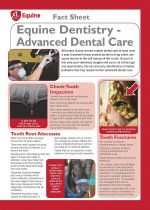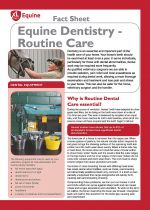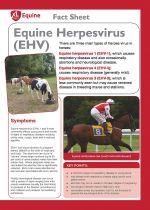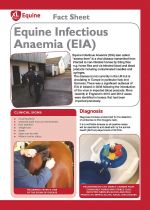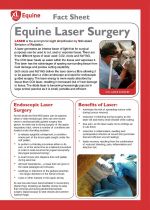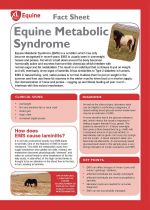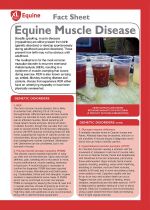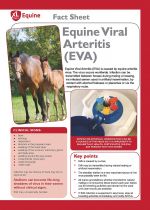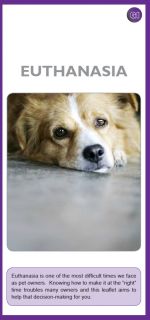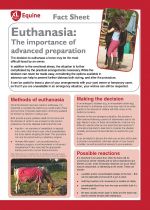Factsheets -
Below are Word and PDF files of our Factsheets. You will need Adobe Reader to view the PDF files - if you need to download Adobe Reader please click here.
Please note: some of these factsheets are several pages long and are large files, so please be patient when downloading!
Equine Dentistry - Advanced Dental Care
All horses should receive routine dental care at least once a year to prevent sharp enamel points forming which can cause trauma to the soft tissues of the mouth.
Equine Dentistry - Routine Care
Dentistry is an essential and important part of the health care of your horse. Your horse's teeth should be examined at least once a year.
Equine Herpesvirus
There are three main types of herpes virus in horses:
Equine herpesvirus 1 (EHV-1); which causes respiratory disease and also occasionally abortions and neurological disease.
Equine herpesvirus 4 (EHV-4); causes respiratory disease (generally mild).
Equine herpesvirus 3 (EHV-3); which is less commonly seen but may cause venereal disease in breeding mares and stallions.
Equine Infectious Anaemia (EIA)
Equine Infectious Anaemia (EIA) also called
'swamp fever' is a viral disease transmitted from
infected to non-infected horses by biting flies
e.g. horse flies and via infected blood and blood
products including contaminated needles and
syringes.
The disease is not currently in the UK but is
circulating in Europe in particular Italy and
Romania. There was a significant outbreak of
EIA in Ireland in 2006 following the introduction
of the virus in imported blood products. More
recently in England in 2010 and 2012 cases
were identified in horses that had been
imported previously.
Equine Laser Surgery
LASER is the acronym for Light Amplification by Stimulated Emission of Radiation.
A laser generates an intense beam of light that for surgical purposes can be used to cut, seal or vaporise tissue. There are three different types of laser used: CO2, diode and Nd:YAG.
The CO2 laser heats up water within the tissue and vaporises it. This laser has the advantages of sparing surrounding tissue from heat damage and precise cutting capability.
Both diode and Nd:YAG deliver the laser down a fibre allowing it to be passed down a video-endoscope and used for endoscopic guided surgery. The laser energy is more easily absorbed by tissue than CO2 laser, resulting in increased risk of heat damage to tissue. The diode laser is becoming increasingly popular in large animal practice as it is small, portable and efficient.
Equine Metabolic Syndrome
Equine Metabolic Syndrome (EMS) is a condition which has only become recognised in recent years. EMS is usually seen in overweight horses and ponies. Fat which is laid down around the body becomes hormonally active and excretes hormone-like chemicals which interfere with normal sugar and fat metabolism. The result is an individual that continues to put on weight and will, eventually, show signs of laminitis. It has similarities to Type 2 diabetes in humans.
EMS in natural living, wild, native ponies is normal. It allows them to put on weight in the summer and then use these fat reserves in the winter months when food is in shorter supply. Our domestication of horse and ponies – rugging up and liberal feeding all year round – interferes with this natural mechanism.
Equine Muscle Disease
Broadly speaking, muscle diseases (myopathies) are either present from birth (genetic disorders) or develop spontaneously during adulthood (acquired disorders). Those present from birth may not be obvious until adulthood.
The medical term for the most common muscular disorder is recurrent exertional rhabdomyolysis (RER), resulting in a syndrome of muscle cramping that occurs during exercise. RER is also known as tying up, setfast, Monday morning disease and azoturia. Horses that experience RER either have an underlying myopathy or have been physically overexerted.
Equine Viral Arteritis (EVA)
Equine Viral Arteritis (EVA) is caused by equine arteritis virus. The virus occurs worldwide. Infection can be transmitted between horses during mating or teasing, via infected semen used in artificial insemination, by contact with aborted foetuses or placentas or via the respiratory route.
Euthanasia
Euthanasia is one of the most difficult times we face as pet owners. Knowing how to make it at the ”right” time troubles many owners and this leaflet aims to help that decision-making for you.
Euthanasia: The importance of advanced preparation
The decision to euthanase a horse may be the most
difficult faced by an owner.
In addition to the emotional stress, the situation is further complicated by the practical arrangements necessary. While the decision can never be made easy, considering the options available in
advance can help to prevent further distress both during, and after the procedure.
It can be useful to leave a plan of your arrangements with your yard owner or temporary carer, so that if you are unavailable in an emergency situation, your wishes can still be respected.
